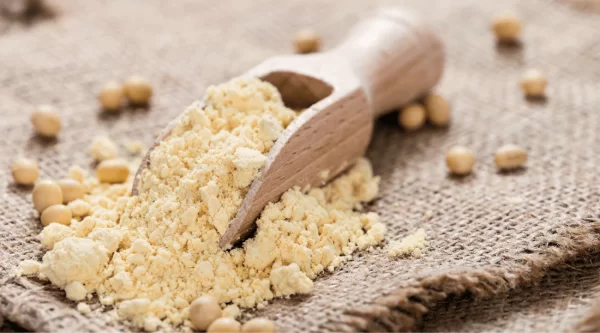
New soybean grinding technologies such as ultra-finely pulverized soybean powder, airflow pulverization, and mechanical pulverization can make the average particle size of the pulverized soybean powder be 20~30 μm. Using this kind of soy flour to process soy milk or tofu and other products will eliminate the discharge of bean dregs and yellow slurry water, which can effectively solve the above environmental problems.
Full utilization of soybean flour is a new development direction for soybean product raw materials
The first point is that the raw materials are stable and can be operated in a standardized manner.
When using soybeans as raw materials to make soy products, the soaking time of the beans must be adjusted accordingly as the temperature changes throughout the year. At the same time, professional personnel are required to judge whether the soybeans are soaked appropriately. However, when using soybean flour as raw materials to produce soy products, the first step is to There is no need to soak the beans, which saves a lot of time and investment in equipment and personnel. It only needs to heat the powder and reconstituted water at a certain ratio to obtain the product with the required concentration, and the product can be more standardized.
The second point is that zero bean dregs have low wastewater discharge.
Making soy products using soybeans as raw materials will produce at least 1 ton of bean dregs and 8 tons of cleaning and soaking wastewater when processing 1 ton of dry soybeans. Currently, due to the increasing environmental protection efforts, there is no effective way to utilize bean dregs, so there is no effective way to utilize bean dregs. Part of the bean dregs is disposed of as solid waste. The current disposal fee is about 750 yuan per ton, and the price is still rising. When making products using soy flour as raw material, there is no need to filter the okara, all raw materials can be utilized, and the production process produces almost no waste water.
The third point is to simplify the process
Comparing the soy milk production process, it only takes half an hour to make a batch of soy milk using soy flour as raw material, eliminating the need for soaking beans, grinding, filtering and other links. It saves at least 10 hours compared with traditional production processes. At the same time, due to the processing The number of links is reduced, and the equipment footprint and equipment investment are greatly reduced.
The fourth point has a wide range of applications
Since the entire production process is carried out under low temperature conditions, the protein activity is maximized, so traditional soy products such as soy milk, tofu, and tofu curd can be made, and can also be applied to bakery products and food additives. Currently, soy flour is used to make soy milk, tofu, bean curd and even baked desserts, and the technology is relatively mature.
The fifth point is high nutritional value
Since soybean flour is fully utilized, the protein and fiber content are higher. At the same time, the germ is removed to reduce the purine content of soybeans. Using a company’s soybean flour as raw material to make 10-degree soy milk, the protein reaches 4.9g/100g (while the current domestic liquid soy milk Most of the protein is around 3g/100g), and the dietary fiber reaches 2g/100g. It can meet the declared amount requirements of dietary fiber in GB 28050 without adding additional dietary fiber.
The sixth point is that product prices have advantages
Based on the price of soybean flour from a certain company, compared with commercially available instant tofu pollen, when parameters such as production time, nutrition, and taste are similar, the cost of making tofu curd with soybean flour is nearly 6 times lower; production using soybean flour Compared with the traditional homemade method in stores, the cost of raw materials is about 3 cents per kilogram higher, but the production time is greatly reduced, and it is easier to label and operate. It requires less operators and is more conducive to store expansion.
One of the difficulties in the development of enterprises in the soy products industry is the discharge of bean dregs and wastewater. Full utilization of soy flour without bean dregs emissions as a new raw material for the development of the soy products industry can effectively solve historical problems and is also a new direction for future industry development.
